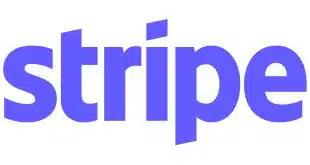Two very different financial institutions are adding or expanding their mobile remote deposit capture services to meet what they say is growing customer acceptance of the new banking channel that removes paper from the payments system and hitches banks and credit unions onto the rising smart-phone star.
On the large financial-institution end, there’s JPMorgan Chase & Co. with $2.25 trillion in assets and one of the first big banks to enable customers to snap pictures of the front and back of a check with their smart phone and then upload the images for deposit through their online-banking application. Chase announced on Thursday that it would start a pilot program in October offering mobile capture to insurance agents, wholesale food vendors, and other distributors, and non-profits.
The service will enable those organizations to accept checks from customers and donors and deposit them using Chase’s mobile-capture app for smart phones rather than having to go to a branch, according to Chris Chaten, vice president of product management. Chaten announced the expansion Thursday at the RDC Summit conference in Orlando, Fla., sponsored by RemoteDepositCapture.com, an information service and portal for the remote capture industry.
Chase first introduced its Image Deposit Direct service for businesses in 2006 and in 2008 rolled out its desktop remote deposit service, Chase QuickDeposit, for small businesses. In July 2010 the New York City-based bank introduced Chase QuickDeposit Mobile service for consumers, including wealthy individuals, and small business. The service runs on Apple Inc.’s iOS operating system and Google Inc.’s Android platform for mobile devices.
Chaten wouldn’t reveal how many customers use the service or much in deposits it has taken in. He did say, however, that after overcoming some operational issues along the way, such as poor image quality and learning how to manage risk, the customer response “has been overwhelmingly positive.” Prominent technology writer David Pogue of The New York Times called QuickDeposit the “best technology idea” of 2010, and the service this year won two Webby Awards from the International Academy of Digital Arts and Sciences.
The October pilot, which Chaten says will last a few months, is part of Chase’s plans to expand remote capture, including mobile capture, to the corporate sphere. Chase now offers Image Deposit Direct and mobile capture applications for brokerages and other banks.
Far down on the asset scale from Chase is Mountain America Credit Union, a West Jordan, Utah-based institution with $2.8 billion in assets, 350,000 members and 60 branches in four states. After introducing an online deposit service in 2006, Mountain America in July launched a mobile capture service that already has pulled in more than $1 million in deposits this month, more than double August’s $458, 616. Tony Rasmussen, senior vice president of eServices, said by phone at an RDC Summit session that only this month did the credit union do any marketing for the service, that being a statement stuffer and online notices with the theme, “Depositing Your Checks Is a Snap.”
“We like the fact that it was sexy and edgy and fairly new in the market,” he said.
Fraud, especially through multiple deposits of a single check, is an inherent risk of remote deposit capture, but Rasmussen said Mountain America’s losses with the new mobile capture service have been minimal. The bank started with very conservative deposit limits, and the only known fraud came within a couple of days after the launch when a member repeatedly attempted to deposit the same check, including some tries late at night. The credit union’s operational system quickly detected the attempts and shut them off.
“The app is smart,” said Rasmussen, noting that besides searching for duplicates, it screens for matches between a check’s written and numeric amounts and a number of indicators that may require human intervention. Less than 1% of Mountain America’s images through remote capture are slotted into a queue for review.
Mountain America currently has a 10-item, $5,000 daily limit on mobile deposits, but the credit union is considering raising that in order to attract small businesses. “I think our risk tolerances will probably increase,” said Rasmussen.
Not surprisingly, both Rasmussen and Chaten said younger adults are enthusiastic adopters of mobile capture, and Chaten added that high-net-worth individuals also like the service. But both acknowledged that branches, ATMs, and other deposit channels aren’t going away. “We believe that mobile deposit will find its place,” said Rasmussen. “We don’t try to force our members into any one [deposit] channel.”




